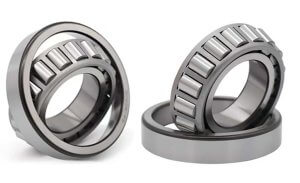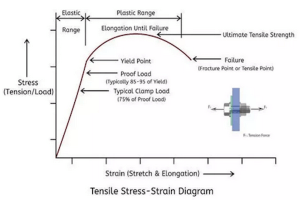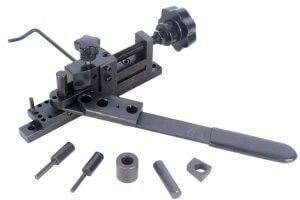Introduction to 3D Printing: TPE vs. TPU
The innovation of 3D printing in the manufacturing industry has revolutionized how products are fabricated, allowing unprecedented design flexibility while reducing production time and costs. Central to this process is the ability to use various materials with different attributes according to specific needs. However, a common challenge that users face pertains to understanding the differences between the types of materials used for 3D printing – particularly Thermoplastic Elastomer (TPE) and Thermoplastic Polyurethane (TPU).
Each material offers unique features:
- TPE: Known for its highly flexible and versatile nature it’s often used when products necessitate high elasticity.
- TPU: Offers excellent abrasion resistance and toughness if a durable and tough product outcome is required.
In order to choose aptly between these two, an understanding of the distinct properties, advantages, and potential use cases of each is essential.
Understanding Key Terminologies: TPE vs. TPU
Thermoplastic Elastomers (TPE) are a class of copolymers or a physical mix of polymers, usually a plastic and a rubber, which consist of materials with equally thermoplastic and elastomeric properties. They offer versatility in use because they can be formed and reshaped over again when subjected to heat. Popular products made from TPE include soft grips on tools, automotive parts such as bumpers, and footwear components.
Moving forward to Thermoplastic Polyurethane (TPU), it is a particular breed under the broad family of thermoplastics. TPU is recognized for its remarkable toughness, excellent flexibility at cold temperatures, resistance to oils, greases, chemicals, and abrasion. This makes it ideal to produce items like power transmission belts, hoses, wire and cable insulations, film and sheeting, just to mention a few.
Flexibility: Comparing TPE and TPU
When it comes to flexibility in 3D printing, both TPE (Thermoplastic Elastomer) and TPU (Thermoplastic Polyurethane) offer unique advantages and considerations.
1. TPE Flexibility
TPE is known for its flexibility and stretchability:
- TPE has the ability to stretch and return to its original shape, making it ideal for applications that require elasticity.
- It is commonly used in industries such as automotive, home appliances, and footwear components.
- TPE is often used to make seals, flexible tubes, anti-vibration mounts, and bumpers.
2. TPU Flexibility
TPU also offers excellent flexibility and elasticity:
- TPU is a soft plastic resin with high elasticity, making it suitable for applications that require flexibility and durability.
- It is commonly used in industries such as cable insulation, sports gear, and electrical tools.
3. Comparison
While both TPE and TPU offer flexibility, there are some differences to consider:
| Factors | TPE | TPU |
|---|---|---|
| Stretchability | High | High |
| Applications | Automotive, home appliances, footwear components | Cable insulation, sports gear, electrical tools |
4. Considerations
When choosing between TPE and TPU for 3D printing, consider the specific requirements of your project:
- If your application requires high stretchability and flexibility, both TPE and TPU can be suitable options.
- Consider the specific industry and use case to determine which material is best suited for your project.
5. Summary
In summary, both TPE and TPU offer flexibility and elasticity for 3D printing applications. TPE is commonly used in automotive, home appliances, and footwear components, while TPU finds applications in cable insulation, sports gear, and electrical tools. Consider the specific requirements of your project to determine which material is most suitable for your needs.
Durability: How Does TPE Stand Against TPU?
When contemplating the durability characteristics of Thermoplastic Elastomers (TPE), it is clear to see that they have superior compression resistance and versatility, contributing greatly to their overall resilience.
This elasticity facilitates a wide range of applications for TPE in various demanding scenarios. However, as beneficial these properties may be, TPEs might experience limitations under high-stress situations or extreme temperatures.
To assess the toughness indicators for Thermoplastic Polyurethane (TPU), it has an inherent winning factor with its high tensile strength, exceptional wear resistance, and robust tolerance towards harsh temperatures making it ideal for industrial-level tasks. TPUs can endure heavy usage without degradation thereby extending longevity.
In comparing both TPE and TPU regarding durability, factors such as stress-bearing capability, temperature resilience, and wear-and-tear handling skills matter significantly:
- TPEs offer excellent flexibility at lower stress levels.
- TPUs typically show better performance in long term, high-stress scenarios.
The choice between TPE and TPU essentially depends on the specific requirements of your 3D printing project – considering trade-offs against application demands and expected operating environment.
Case Studies: Effective Utilization of TPE and TPU in 3D Printing
The attributes of flexibility and durability have proven TPE to be a superior material choice in certain 3D printing applications. A notable example is seen in the production of wearable medical aids, such as personalized orthotics. In this use case, it’s essential for the final product to conform precisely to each user’s specific anatomy, while being resilient enough to withstand regular usage without deformation. TPE, with its extensive capability to flex matched with a robust enduring nature, fulfills these requirements more impressively than other material options.
In contrast, there are instances where TPU showcases inherent superiority due to its strength and resilience traits. For instance, when creating functional prototypes or mechanical parts that require high impact resistance, TPU outperforms other materials. Its remarkable capacity to endure stress and resist abrasion makes it ideal for manufacturing durable elements like protective cases and gear mechanisms. Thus, the practical demonstration of TPU in these specifics highlights its advantage in terms of overall longevity and reliability.
- TPE Benefits: Flexibility and Durability
- Use Case: Wearable Medical Aids (Orthotics)
- TPU Benefits: Strength and Resilience
- Use Case: Functional Prototypes and Mechanical Parts
Conclusion: TPE vs. TPU in 3D Printing
In the realm of 3D printing, both TPE (Thermoplastic Elastomers) and TPU (Thermoplastic Polyurethane) have marked their spaces owing to their distinct characteristics related to flexibility and durability. TPE is known for its exceptional flexibility which surpasses that of TPU, although TPU triumphs when it comes to durability- offering a more solid construct without compromising its elastic property. Recognizing these traits is fundamental as they influence performance across different use cases.
- For instance, TPE’s extreme pliability can be leveraged for creating objects like keychains or flexible phone casings.
- On the other hand, the resilience inherent in TPU makes it incredibly useful for generating long-lasting items such as mechanical moving parts or protective covers.
This comparison underlines the necessity of understanding material characteristic before undertaking any 3D printing project.
Other Articles You Might Enjoy
- TPE vs. TPU in 3D Printing: Flexibility, Durability, and Use Cases
Introduction to 3D Printing Using TPE and TPU Materials 3D printing, a revolutionary technology that has transformed multiple industries such as manufacturing, healthcare, and aerospace, is dependent on the choice…
- Understanding 3D Printing: Processes, Benefits, and Uses
Introduction to 3D Printing Technology 3D printing, a transformative approach to manufacturing and prototyping, enables the creation of complex structures from digital blueprints by successively layering material until a three-dimensional…
- 3D Printing Resins: Standard vs. Engineering-Grade Options
Introduction to 3D Printing Resins In the vast field of additive manufacturing, 3D printing resins hold a significant place due to their unique properties and wide-ranging applications. These thermosetting materials…









